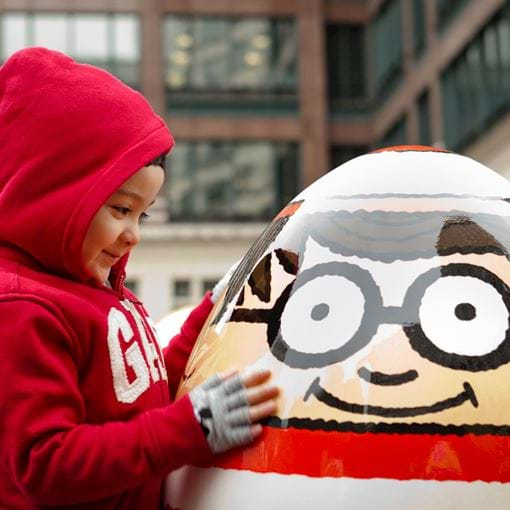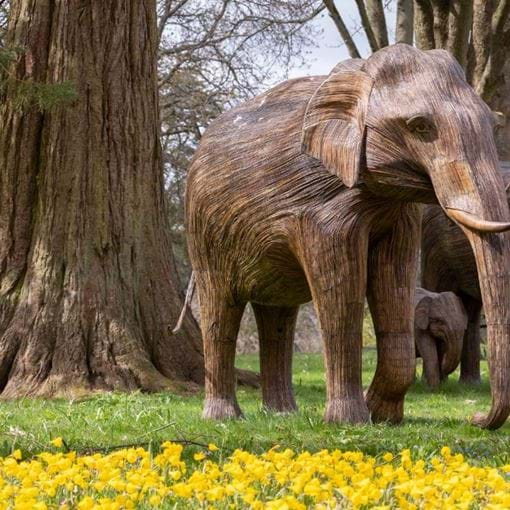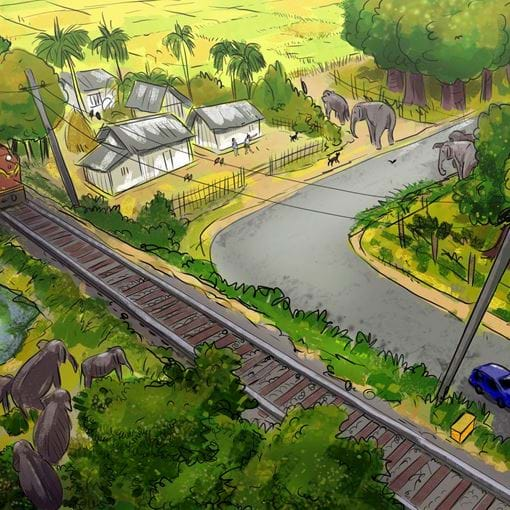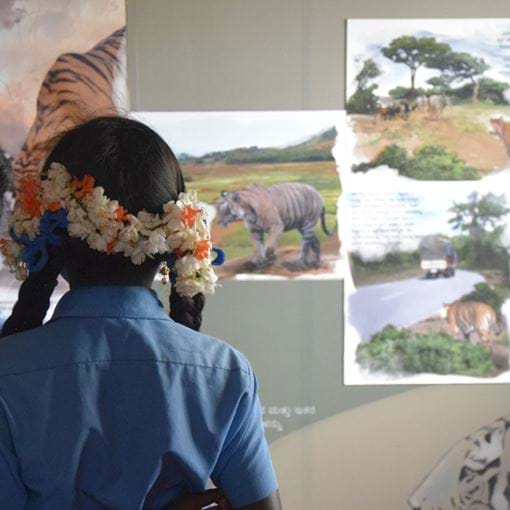Conservation via Accessible Art
When it comes to art, people are simple. We see, we feel, we create art.
And nothing inspires us quite as much as nature and wildlife.
From the moving scenes of wild animals like leopards hunting, to hilarious videos of baby elephants throwing tantrums – art builds emotional connections. When we take action to conserve our rich biodiversity, we’re driven by the feelings incited by depictions of nature.
This is why we love to make art accessible to everyone through public art installations, illustrations, and educational materials.
Five ways we’re using art for conservation
From fundraising to education, we’re using art to power our conservation work in South Asia.
1) The Big and Little Egg Hunts
The Big Egg Hunt, also known as the Fabergé Egg Hunt of 2012, was a display of large egg-shaped sculptures scattered around London to residents’ discovery, and delight.
Nearly 200 egg sculptures were created by artists for the world’s largest Easter egg hunt at the time. These eggs were later auctioned off to raise funds for our on-ground conservation initiatives.
Following a ten-year hiatus, the Little Egg Hunt is all set to return to London in 2024 bringing some easter cheer! Sponsored by Clarence Court and partners Cadogan Estates and IBI Logistics, the lineup includes fashion designers and artists bringing eggs that are cool, kooky, and most of all, creative to the streets of London. And this is only the teaser. The next Big Egg Hunt is lined up for 2025!

2) The CoExistence campaign
London’s biggest environmental art campaign addressed the growing overlap of the human and the animal world, and we had a lot of fun putting it together.
The exhibition comprised of herds of elephant sculptures made of the invasive weed Lantana camara that is destroying and fragmenting the habitats of the Asian elephant. They were made by indigenous artisans to resemble the elephants they know well and share space with. Each of the elephants from the CoExistence herd even has a name!
Proceeds from auctioning the Lantana elephants went into the CoExistence Fund, which supports projects that enable coexistence between people and wildlife.

3) The ‘Gajah Katha’ outreach series
Through the years, our partner Aaranyak continues to develop ways to grab and hold public attention for conservation.
As part of their work in mitigating human-elephant conflict (HEC) in Northeast India, Aaranyak brought in popular Assamese artist Naba Pratik Das to design and illustrate informative posters to be used in their ‘Gajah Katha’ or ‘Elephant Story’ campaign.
Das is best known for his representation of Assamese folk tales through comics. He brings his unique sense of visual storytelling to these posters. Through paintings, diagrams, and comic strips, he makes elephant ecology and HEC mitigation accessible and interesting to adults and children alike.

4) Interactive learning through art
The Nature Information Centre is among the first in rural India. Set up by our partners at the Holématthi Nature Foundation, the NIC brings awareness about conservation to the people living at the edges of the wilderness and human settlements.
From casts of elephant footprints to life-size cutouts of native species, the centre is a marvel of interactive education. A full wall of the main room is a richly crafted diorama of native species and models of birds and bats hang from the ceiling.
Student visitors can’t help but get excited when they visit, but so do the teachers! We’ve spotted adults sneaking away for a quick selfie with the gorgeous art in the space. And of course, everyone leaves with their heads and hands full of a renewed appreciation for their local wildlife.

5) A parade of elephant sculptures
Bringing large, show-stopping sculptures to the public are becoming a signature of our efforts in art for conservation.
The Elephant Parade is a social enterprise running the world’s largest art exhibition of elephant sculptures. In 2010, we were delighted to execute the display of over 250 stunning elephant sculptures painted by artists working across mediums.
After the public exhibition, these sculptures were auctioned off to raise funds for our conservation efforts for the Asian elephant.
Art has allowed us to bring attention to conservation issues, as well as raise awareness and funds alike. We’re so grateful to the artists who have worked with us and helped us raise funds for our work.
This year, the Little Egg Hunt is live from 18 March – 15 April. Join the hunt here!
By Caroline Abraham, Communications Officer - Conservation
